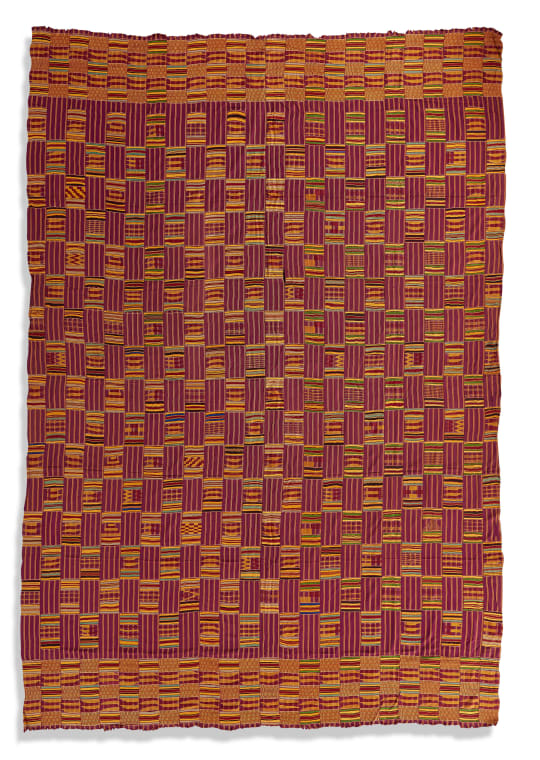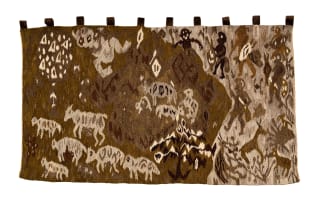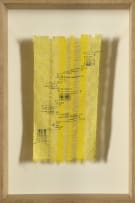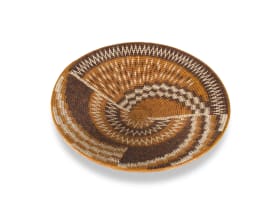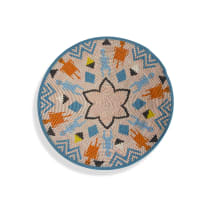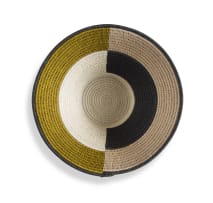An Asante (Ashanti) Nsaduaso
Unrecorded artist, Asante (Ashanti) Peoples
About this Item
Notes
The Asante [Ashanti] dominated the trade networks that connected the inland forests to the Sahara on the West African coast during the 18th century. Their wealth, influence, authority, and prestige continued to grow into the 19th century. In the early days, cloths were woven using hand-spun cotton, with colours limited to bleached white or indigo. As trade expanded with Europe, Asante weavers gained access to traded textiles. They began to unravel imported silk cloths to access yarn in various colours, which sparked the creation of the multitude of designs that have become synonymous with kente cloth.
Asante (or Ashanti) textiles were exclusively woven on commission for members of the royal and chiefly elite. The warp designs of Asante cloths had to be selected from the repertoire of designs approved by the royal houses. Each design had a title that reflected its region of origin, its warp design (e.g., Guinea Fowl Feather, Back on the Tortoise), a proverb or a saying (e.g. "Money attracts blood relatives," "News of good deeds does not travel far"), or some other aspect of Asante culture, society, or ceremony.
While the weaver was obligated to follow a specific design for the warp, it was in the weft-faced blocks and supplementary float patterns that he could express not only his weaving skills but also his unique artistic style. In these spaces, they weavers had the freedom to combine colours and designs as they pleased. Fine cloths, like this example, featured supplementary float designs that rarely repeated, enticing viewers to continuously explore and appreciate their complexity.
One of the main characteristics of Ewe and Asante textiles is the alternation weft- and warp-faced plain weave areas in one length of strip. The use of two pairs of heddles, which enables this specific characteristic and is therefore crucial in the formal developments of both Ewe and Asante textiles, most likely, originated in the Agotime area. This technique spread to other weaving centers sometime in the eighteenth or early nineteenth century and was fully taken up by Asante and Ewe weavers at least by the middle of the nineteenth century, 1
Literature
1 Malika Kraamer (2006) 'Ghanaian Interweaving in the Nineteenth Century: A New Perspective on Ewe and Asante Textile History', African Arts, vol. 39, no. 4, pages 36-95.
View all Unrecorded artist, Asante (Ashanti) Peoples lots for sale in this auction
